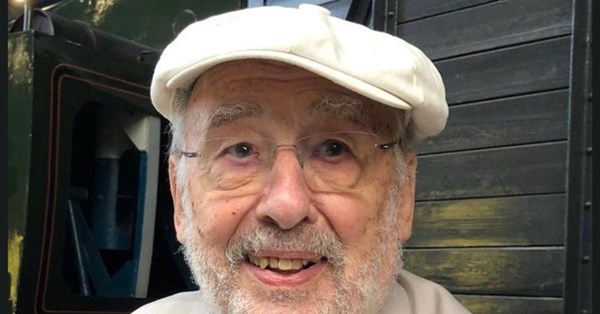Kenneth Shenton writes:
IF POST-WAR British organ building had a Renaissance man during the latter half of the last century, it would surely be John Norman.
Descended from a long line of British organ builders dating back to his great-grandfather, William, a cabinet maker, he was introduced to the organ business, when, aged 16, he was on a summer holiday job. He was sent to clean the instrument housed in the old Methodist Mission Hall, just off the Old Kent Road, in south London. He perhaps remained unique in combining a 20-year career as a practical organ builder with many more years as an independent organ adviser and consultant.
Herbert John La French Norman, universally known as John, was born in Hornsey, north London, on 15 January 1932, the son of Herbert La French Norman and his wife, Hilda Caroline (née West). He later studied the organ with H. A. Roberts and acoustics with Dr R. W. Stephen. After graduating from Imperial College, London, in 1953 with a physics degree, he joined the family organ-building firm of William Hill & Sons and Norman & Beard. He was appointed a director in 1960 and four years later became managing director.
Norman played a large part in the revitalisation and redirection of British organ building both at home and abroad. The reconstruction of the organ in the chapel of St John’s College, Cambridge, completed in 1959, proved a landmark, with its balanced flue choruses, neo-Baroque choir organ, and attention-grabbing trompeta real. Other major rebuilds included the organs in Gloucester, Norwich, Lichfield, Chelmsford, and Brisbane Cathedrals, Bath Abbey and Southwell Minster, as well as the distinctive, but highly controversial, new organ for the concert hall of the Royal College of Organists. One of his cleverest and most successful small neo-classical multum in parvo designs using direct-electric soundboards came at Carrs Lane Church, in Birmingham.
In 1974, increasing policy differences with his fellow directors led Norman to move to the City to work for IBM UK. He stayed with them full-time until 1990. He not only started up their customer magazine, but made many definitive contributions to a range of specialist music periodicals. Introduced in 1980, his “Soundboard” column in the Organists’ Review ran for three decades. For 17 years, until 2000, he was the founding editor and publisher of both The Organbuilder and Musical Instrument Technology. Writings on a more expansive canvas began in 1966 in the form of The Organ Today, which he compiled with his father. This was soon followed by The Organs of Britain, The Box of Whistles, Organ Works, and, in collaboration with Jim Berrow, Sounds Good.
Norman pioneered and patented a unique system of electro-magnetic actions which incorporated the first solid-state mechanisms. In later years, he was much in demand as an independent organ adviser. Instruments benefiting from his input included both the four-manual Walker and two-manual Frobenius in Lancing College Chapel, the Kenneth Tickell instrument in Worcester Cathedral, the Mander at Mill Hill School, in north London, and Goetze & Gwynn’s refurbishment of the historic instrument in St Lawrence’s, Whitchurch, Little Stanmore (Obituary, 13 September 2024). No less impressive was the small William Drake organ built for the chapel of St Mary Undercroft in the Palace of Westminster. There, a Pugin-inspired design adorns its casework.
Norman was chair of the British Institute of Organ Studies, president of the Institute of Musical Instrument Technologists, organ adviser to the diocese of London, a freeman of the City of London, and a member of the St Albans diocesan synod. For ten years, he served on the panel of the Cathedrals Fabric Commission for England. He was also a longstanding member of the choir of St John the Evangelist, Friern Barnet, and, like his father, counted himself among that rich tradition of organists who maintained a lifelong passion for model railways.
John Norman died on January 27, aged 93. His wife predeceased him. He is survived by a son and two daughters.

















